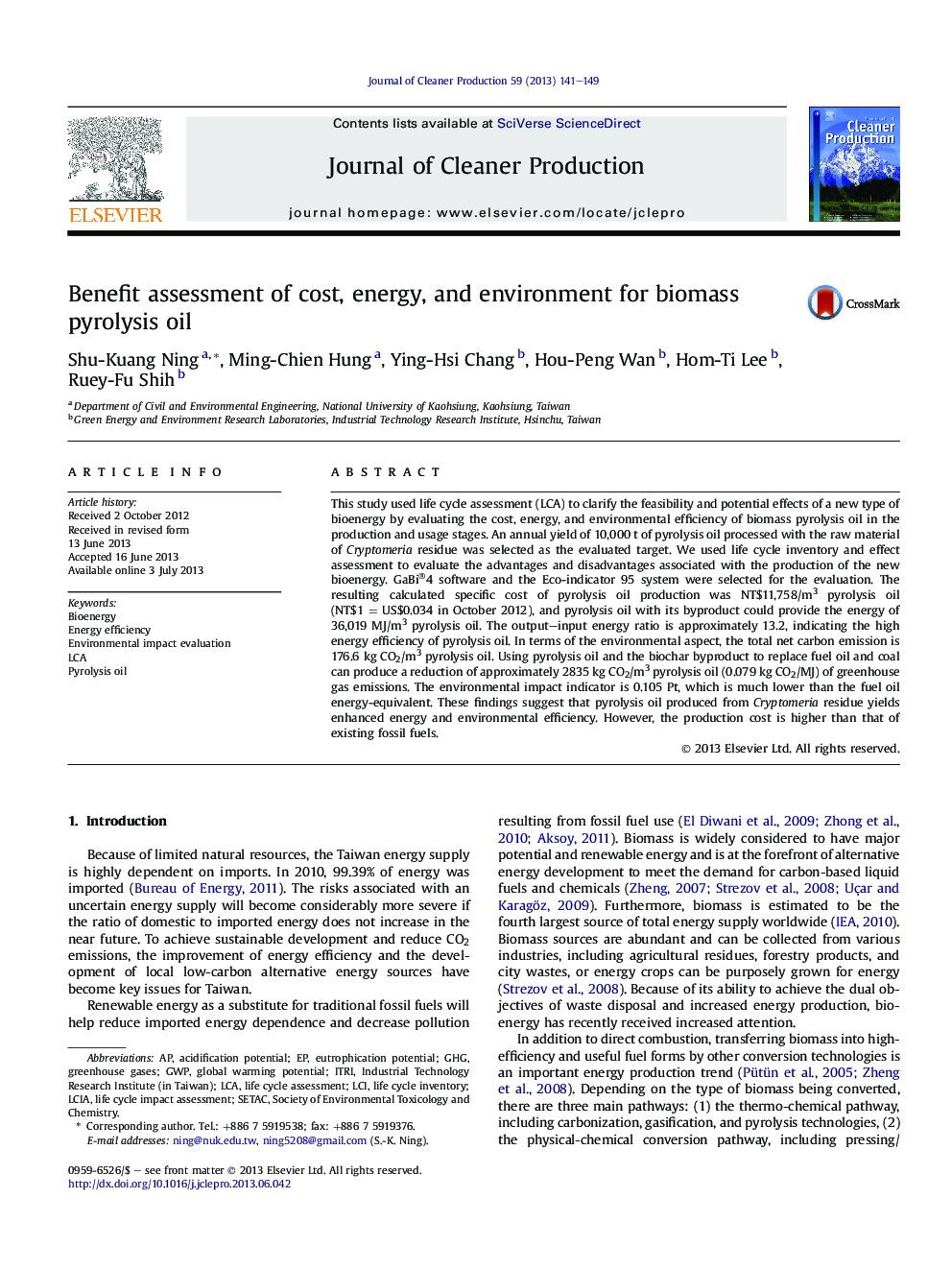| Article ID | Journal | Published Year | Pages | File Type |
|---|---|---|---|---|
| 8107258 | Journal of Cleaner Production | 2013 | 9 Pages |
Abstract
This study used life cycle assessment (LCA) to clarify the feasibility and potential effects of a new type of bioenergy by evaluating the cost, energy, and environmental efficiency of biomass pyrolysis oil in the production and usage stages. An annual yield of 10,000 t of pyrolysis oil processed with the raw material of Cryptomeria residue was selected as the evaluated target. We used life cycle inventory and effect assessment to evaluate the advantages and disadvantages associated with the production of the new bioenergy. GaBi®4 software and the Eco-indicator 95 system were selected for the evaluation. The resulting calculated specific cost of pyrolysis oil production was NT$11,758/m3 pyrolysis oil (NT$1Â =Â US$0.034 in October 2012), and pyrolysis oil with its byproduct could provide the energy of 36,019Â MJ/m3 pyrolysis oil. The output-input energy ratio is approximately 13.2, indicating the high energy efficiency of pyrolysis oil. In terms of the environmental aspect, the total net carbon emission is 176.6Â kg CO2/m3 pyrolysis oil. Using pyrolysis oil and the biochar byproduct to replace fuel oil and coal can produce a reduction of approximately 2835Â kg CO2/m3 pyrolysis oil (0.079Â kg CO2/MJ) of greenhouse gas emissions. The environmental impact indicator is 0.105 Pt, which is much lower than the fuel oil energy-equivalent. These findings suggest that pyrolysis oil produced from Cryptomeria residue yields enhanced energy and environmental efficiency. However, the production cost is higher than that of existing fossil fuels.
Keywords
Related Topics
Physical Sciences and Engineering
Energy
Renewable Energy, Sustainability and the Environment
Authors
Shu-Kuang Ning, Ming-Chien Hung, Ying-Hsi Chang, Hou-Peng Wan, Hom-Ti Lee, Ruey-Fu Shih,
